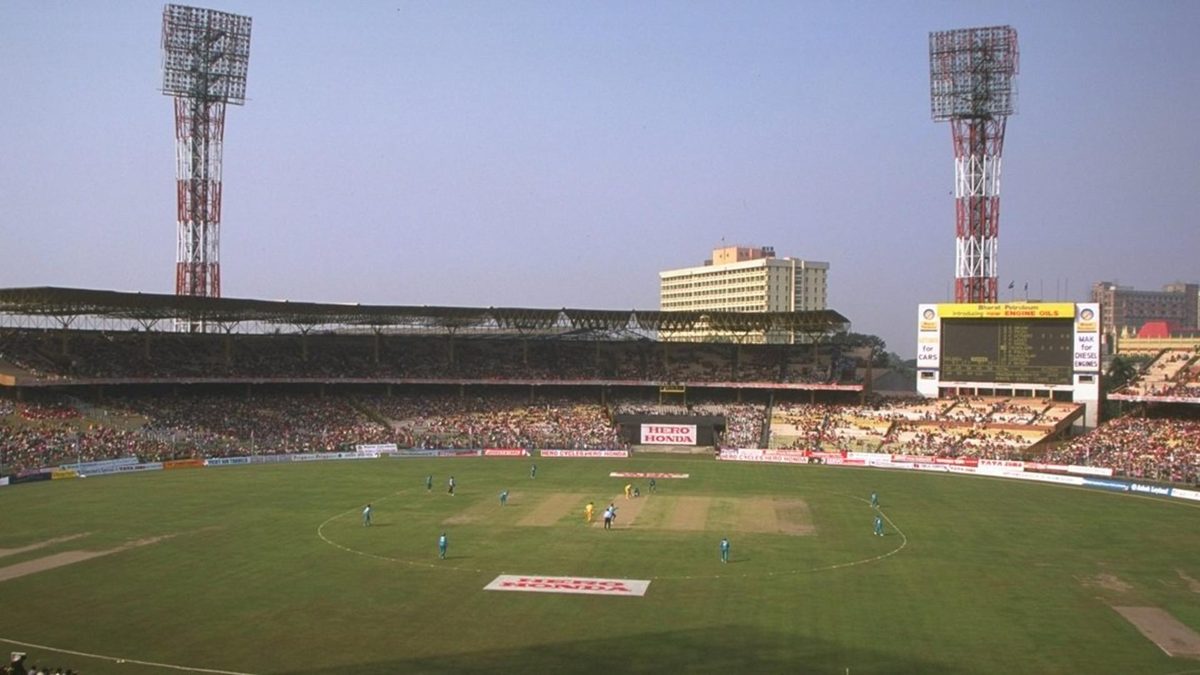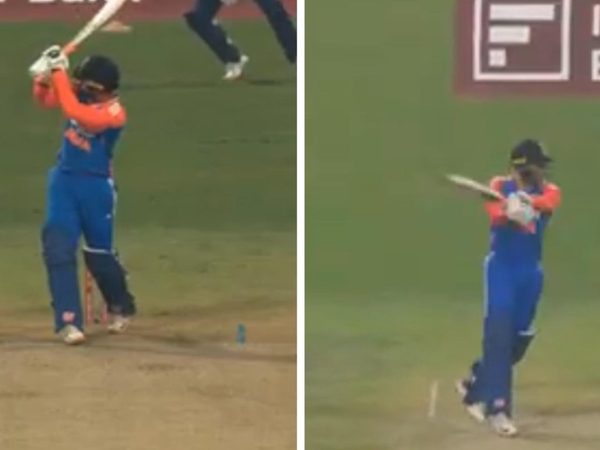
Over the years, the Eden Gardens have had a most singular relationship with the cricket World Cup.
To bet on the World Cup with our Match Centre Partners bet365 head here.
In 1987, India co-hosted the World Cup for the first time (if one ignores the four-team 1978 Women’s World Cup). The Eden Gardens were the automatic choice as the venue for the final on multiple counts. The oldest active international venue in India, it was, at that point, the largest ground in the country in terms of capacity.
There was a second match there as well, a league clash between New Zealand and Zimbabwe. There was considerable hype around the new electronic scoreboard – archaic by today’s standards but high-end back then – which ‘debuted’ in that match.
It turned out to be a dud. Some fans could at least see the manual scoreboard, but for the others – especially the ones not equipped with transistor radio sets – the entire match turned out to be one guessing game.
India did not make it to the final, but true to its erstwhile reputation, the Eden Gardens had a full house at the 1987 final. The electronic scoreboard worked, too.
If the scoreboard fiasco was bad, what happened in the 1996 edition was worse. The opening ceremony followed Murphy’s Law to the dot. The performers donned random apparel, for their equipment had got stuck in traffic. The announcer made gaffes. And the much-anticipated laser show was marred by rain and strong wind.
It did not end there. Calcutta (now Kolkata) hosted only one match in that edition, the semi-final between India and Sri Lanka. There were almost certainly more people than seats, and many had little option but to sit on the concrete staircases.
After Sri Lanka made 251-8, there was optimism at the serpentine queues for the sparse toilets. The roar increased with every shot as India reached 98-1. Then they collapsed in spectacular fashion, to 120-8.
The crowd, already on the brink of erupting on a humid day, could take it no more. They flung objects with no particular target whatsoever, and the cricketers had little option but to come off the ground.
Match referee Clive Lloyd’s decision to reward the match to Sri Lanka remains unique in the history of the World Cup. As the crowd left the ground – it remains the only time I was scared for my own safety during an international cricket match – one brave spectator decided to go against the tide. ‘We are sorry, congratulations Sri Lanka’ ran the banner.
The 1997 Women’s World Cup final was another thing altogether. Eden Gardens hosted the final, but on a Monday. Such was the gender gap that Doordarshan, India’s national television station, were set to telecast a men’s ODI between India and Sri Lanka on the Sunday.
There was one channel, so a World Cup final had to be scheduled to make way for a bilateral series match.
But the weekday did not matter. The charismatic Subhash Chakraborty, the state transport minister, had attained legendary status for his ability to attract large crowds. No exact figure is available, but the enormous venue was close to full that day. It is likely that, till that point, it was the largest attendance for a women’s cricket match.
After Australia beat New Zealand in the final, the team thanked the crowd with a victory lap. Along with the World Cup, they won, among other things, teacups and saucers.
Watching from the sidelines was a local ball-kid called Jhulan Goswami. Inspired by Cathryn Fitzpatick that day, Goswami took up cricket seriously. She would later break Fitzpatrick’s world record for most ODI wickets.
Come 2011, and the Eden Gardens authorities failed again. They could not get the venue ready by ICC’s cut-off date for the India-England clash, and the match had to be moved to Bengaluru. The Kolkata fans missed out on India’s only tied match at the World Cup till date.
The venue ended up hosting three matches in all that year: two of them featured one Associate Nation; the other, two.
Five years later, the Eden Gardens witnessed the West Indies’ famous T20 World Cup double on the same day. Local fans fondly recall the Hayley Matthews-Stafanie Taylor stand and Carlos Brathwaite’s four sixes.
What is not as well remembered is the how the venue prepared for the rain forecast for the India-Pakistan clash. The ground staff covered the entire ground – which did not boast of great drainage – and sat on the edges of the covers without rain gear until the conditions allowed an 18-over game.
The 2023 edition was preceded by a fire (literally, albeit a harmless one). One wonders what is in store in the tournament itself.








